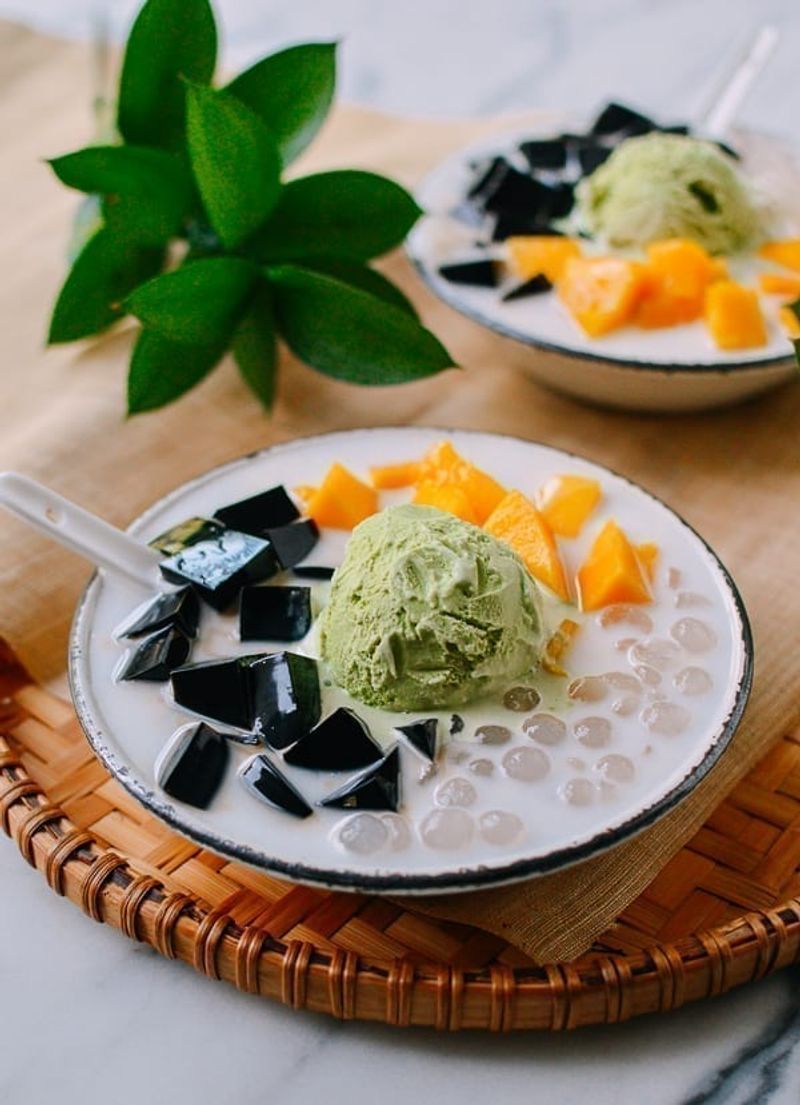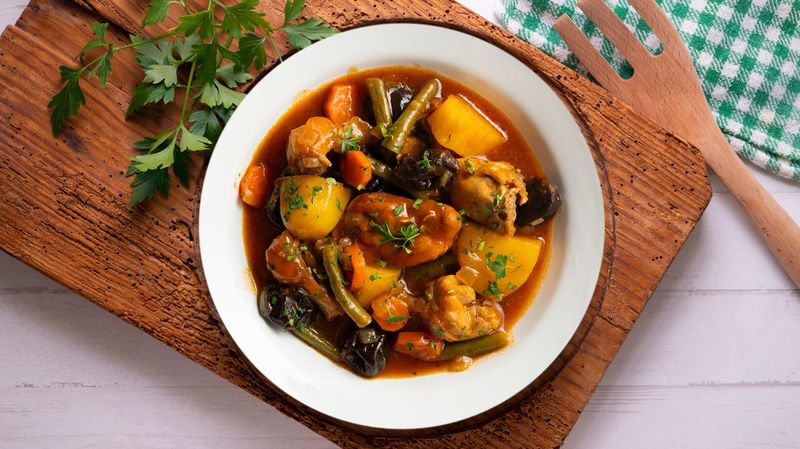7 Lesser-Known Foods That Fall Flat—And 6 Hidden Gems That Are Shockingly Delicious

Exploring the world of lesser-known foods, some surprisingly disappoint while others shine unexpectedly. The culinary landscape is full of surprises, from dishes that miss the mark to those that delightfully exceed expectations. This list uncovers seven foods that often fall flat and six hidden gems that offer shockingly delicious experiences.
1. Mock Turtle Soup

Despite a rich Victorian heritage, mock turtle soup often disappoints. Instead of a flavorful broth, many find it tasting more like a salty, thin gravy. This imitation version lacks the depth and complexity that its name suggests.
Historically introduced as a more affordable alternative to green turtle soup, it never quite matches its predecessor. The absence of real turtle meat is evident, leaving a gap in authenticity and richness.
For those expecting a gourmet experience, the reality can be underwhelming. The potential for a hearty, deep-flavored dish remains largely unfulfilled.
2. Lutefisk

Lutefisk, a traditional Nordic dish, often challenges even adventurous eaters. Made from dried whitefish reconstituted in lye, its gelatinous texture can be off-putting. Many find its slippery consistency difficult to enjoy.
Culturally significant, this dish is more appreciated for its heritage than its taste. The preparation process, involving caustic lye, adds to its notoriety.
Despite its long history in Scandinavian Christmas traditions, modern palates seldom find it appealing. Lutefisk’s unique preparation and acquired taste make it a culinary curiosity rather than a delightful dish.
3. Tofurky

Tofurky, hailed as a staple for plant-based Thanksgiving dinners, often falls short of expectations. Marketed as a turkey alternative, its dense, rubbery texture can be unappealing.
For some, the overly salty flavor overpowers any subtlety the dish might offer. The intention to cater to vegan and vegetarian diets is clear, but execution sometimes lacks finesse.
While innovative, tofurky can feel more like a compromise than a celebration. The quest for a satisfying meat alternative continues, as many seek a more delightful and authentic plant-based experience.
4. Blood Sausage (Black Pudding)

Blood sausage, or black pudding, is steeped in culinary tradition but isn’t universally loved. Its iron-rich flavor and crumbly texture can be divisive, especially for those unfamiliar with it.
A staple in traditional breakfasts, this dish is often appreciated more for its historical significance than its taste.
Though cherished in regions like Ireland and Scotland, it challenges palates unaccustomed to its strong, savory profile. It’s an acquired taste that speaks more to cultural nostalgia than universal delectability.
5. Canned Brown Bread

Canned brown bread presents a curious culinary option, often failing to impress modern tastes. Originally created for its shelf-stability, its molasses-forward flavor can seem cloying.
Served directly from the can, the bread’s gummy texture might surprise those expecting a traditional loaf.
Although it holds nostalgic value for some, it lacks the fresh, airy quality preferred by contemporary bread enthusiasts. What once was practical now seems perplexing, as the charm of canned brown bread fades against today’s artisanal offerings.
6. Grass Jelly

Grass jelly, a popular component in Asian desserts, often perplexes new tasters. Its bitter, herbal flavor and slippery consistency can be challenging to embrace.
Typically served in drinks or desserts, grass jelly is beloved in its native regions for its cooling properties.
For many, the unfamiliar taste and texture make it an acquired choice. Despite its health benefits, it remains a curious yet niche ingredient outside its cultural origins. Grass jelly invites adventurous eaters to explore beyond conventional sweet tastes.
7. Nutria (Swamp Rat)

Nutria, or swamp rat, is a sustainable choice found in Louisiana but doesn’t usually win culinary accolades. Its gamy flavor can deter even the boldest diners.
Consumed for environmental reasons, nutria is more admired for its ecological impact than its taste.
Efforts to popularize it as a viable protein source highlight sustainability, not flavor. For those unfamiliar with game meat, nutria remains a tough sell. It symbolizes an eco-conscious effort rather than a gourmet indulgence.
8. Elote (Mexican Street Corn)

Elote is a delightful revelation for anyone exploring Mexican street food. Grilled to smoky perfection, it’s slathered with creamy mayo, tangy cotija cheese, zesty lime, and a sprinkle of chili powder.
The mix of flavors and textures creates an experience that’s both messy and irresistible. Each bite offers a taste of authentic Mexican culture.
Often served by street vendors, elote captures the vibrant spirit of Mexico. It’s a flavorful journey that stands out as a beloved favorite for locals and travelers alike. A true street food gem!
9. Arepas

Arepas are a beloved staple in Venezuelan and Colombian cuisine, offering a delightful taste of South American culture. These cornmeal patties are crisp on the outside, soft inside, and versatile enough to be stuffed with various fillings.
From cheese to beans or avocado, the combinations are endless and delicious. Arepas bring a sense of warmth and comfort to any meal.
As a symbol of shared culinary heritage, they unite people across regions. With each bite, arepas celebrate the vibrant flavors and traditions of their origins.
10. Okonomiyaki (Japanese Savory Pancake)

Okonomiyaki is a savory Japanese pancake that captivates with its umami-rich flavor. Packed with cabbage and topped with a medley of sauces and bonito flakes, it’s a dish that surprises with every bite.
Often found at street vendors or specialized diners, okonomiyaki’s appeal lies in its customizable nature. Each preparation can reflect personal or regional preferences.
This versatile dish brings the bustling energy of Japanese street markets to the table, inviting all to savor its unique taste. It’s a culinary adventure that speaks to creativity and tradition.
11. Korean Gochujang Brussels Sprouts

Korean gochujang brussels sprouts are a modern twist on a classic vegetable, transforming it into a show-stealing side dish. Roasted until crispy, each sprout is coated in a spicy-sweet fermented red chili paste.
The result is a delightful blend of heat and flavor that surprises and satisfies. It’s a dish that elevates humble brussels sprouts to new culinary heights.
Perfect for those seeking bold tastes, this preparation showcases the versatility of Korean flavors. It turns the ordinary into something extraordinary, leaving a lasting impression.
12. Tahdig

Tahdig, the crispy bottom crust of Persian rice, is a hidden gem that often surpasses the main dish. Golden and buttery, it offers a deeply satisfying crunch with every bite.
Cherished in Persian cuisine, tahdig is a testament to the art of rice cooking. Its unique texture and flavor make it a sought-after delight at gatherings.
This culinary treasure transforms simple rice into an extraordinary experience, embodying the rich cultural heritage of Iran. Tahdig invites all to enjoy a taste of Middle Eastern warmth and hospitality.
13. Cottage Cheese Pancakes (Syrniki from Eastern Europe)

Cottage cheese pancakes, known as syrniki in Eastern Europe, are a breakfast revelation. Light and protein-packed, they offer a gentle sweetness that’s perfect for morning indulgence.
With a tender texture, these pancakes delight both young and old alike. Syrniki are often topped with berries or a dollop of sour cream, enhancing their appeal.
Rooted in tradition, they bring a comforting familiarity to the table. Syrniki are a delightful nod to Eastern European culinary tradition, offering a nutritious and tasty start to the day.
